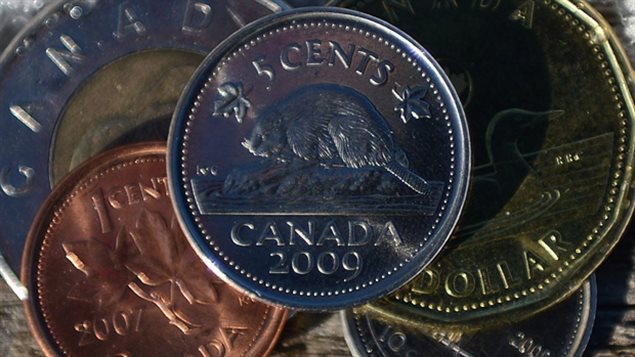(comments to all stories can be made at the bottom of the page)
“ A penny for your thoughts?”, “Here’s my 2-cents worth…..”
These are sayings that are fading fast in Canada since the penny, the one-cent coin, was discontinued in 2013.
The Conservative Party finance minister at the time said the penny cost more to make than it was worth, so it had to go.
No sooner had it gone, than experts began looking at the 5-cent coin, the ‘nickel’ and its future.

At the time a retired 30-year veteran of the Bank of Canada, Jean-Pierre Aubry, who had advocated for the demise of the penny was also saying the nickel should go. Vending machine operators have also advocated for end of the nickel.
Earlier this year the Desjardins financial services group released a report (link at bottom) saying the nickel should go. That report estimated the coin should be gone within about five years. It also suggested Canada eventually could move to a cashless society, although that would not likely happen anytime soon.
Internal memo revealed this week shows government discussing future of 5-cent coin
This week Canadian Press obtained a government memo from April of this year showing the current Liberal government Finance Department senior officials had been examining the nickel’s purchasing power, usage and production costs. Much of the document, obtained under “Access to Information” was blacked out including the ‘assessment’ section which probably discussed the future for the coin.
“A nickel’s not worth a dime anymore” Yogi Berra
The memo prepared for deputy finance minister Paul Rochon read in part, “As there are virtually no goods or services that can be purchased for a nickel, or several multiples thereof, the coin is generally used only to make change as part of larger transactions,”

It continued, “The purchasing power of the nickel has eroded over time, relative both to prices and incomes.”
The memo also points out that New Zealand and South Africa have dropped the 5-cent coin from their currencies.
However, in an email response to questions, a Finance department spokesman, David Barnabe, wrote that the government has no plans to discontinue the nickel.
One wonders if that comment should be taken at “face value”.
The Canadian five-cent coin was introduced in 1858, and was originally made of silver. The small, thin coin was commonly known as a ‘fish-scale’. In 1922, silver was removed and the coin was made of 99.9 percent nickel, from which it got its current nickname. Today’s nickels are actually nickel-plated steel with a small amount of copper
Additional information- sources
CBC-Business- P Evans- May 2016
Canadian Press- Andy Blatchford-Oct26, 2016







For reasons beyond our control, and for an undetermined period of time, our comment section is now closed. However, our social networks remain open to your contributions.